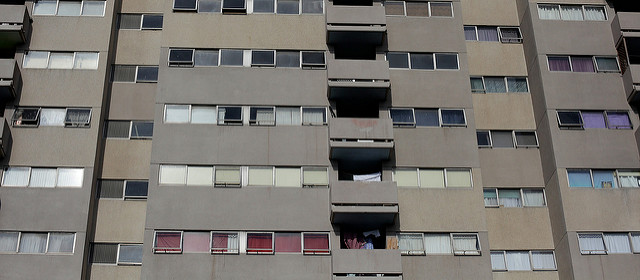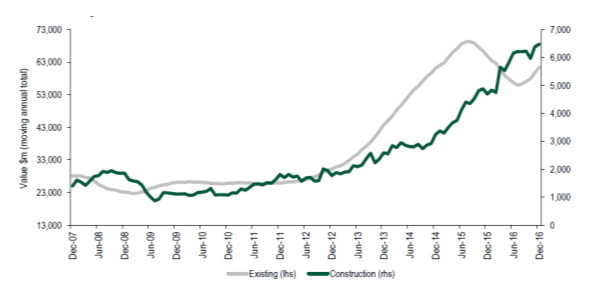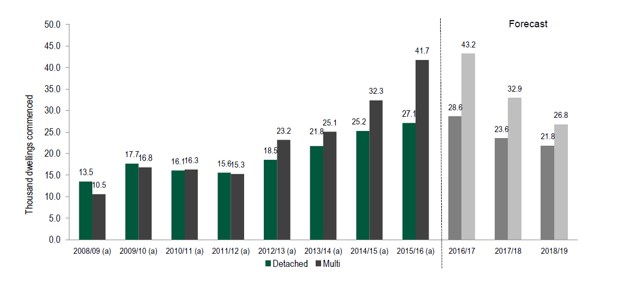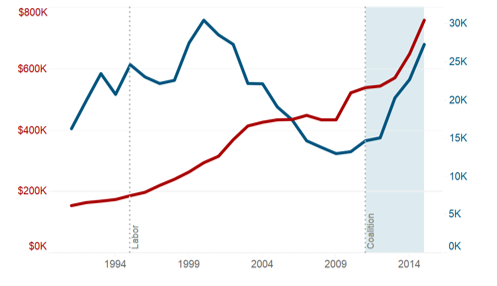Alan Morris, University of Technology Sydney; Hal Pawson, UNSW, and Kath Hulse, Swinburne University of Technology. This article was originally published on The Conversation.
A growing proportion of Australian households depend on the private rental sector for accommodation. This growth has occurred despite substantial insecurity of tenure under the law, unlike other countries with high private rental rates, such as Germany. ![]()
Our newly published research on the impacts of long-term or even lifelong insecurity on Australian private renters found their responses range from lack of concern to constant fear and anxiety.
So, how many people are affected? Back in the 1990s about one-fifth of us rented our homes from private landlords. Now this has swelled to more than one-quarter.
Historically, renting was usually a transitional step in the life cycle. Most people rented for a while and eventually bought a home.
While this housing pathway is still dominant, a growing number of Australians cannot make this transition. At least one in three private renters are long-term private renters (ten years or more). This equates to at least one in 12 households.
Australian households rent accommodation under a regulatory framework that provides little protection against landlord-instigated “forced moves” or untenable rent increases. The initial written agreement/lease rarely extends beyond a year. Once it ends, the tenancy typically shifts to a “periodic” basis, and notice to vacate can be given without reasons.
The period of notice ranges from 42 days to 26 weeks – depending on the state or territory. Thus, beyond the initial lease, all private tenants are subject under the law to ongoing insecurity.
Drawing on 60 in-depth interviews, we explored the impacts of this de jure housing insecurity on long-term private renters in different housing markets (low, medium and high rent, with 20 interviews in each) in Sydney and Melbourne. We identified three typical responses to ongoing insecurity:
- incessant anxiety and fear;
- lack of concern; and
- concern offset to an extent by economic/social capital, with renting sometimes seen as the only means of living in a desired area.
We discuss these responses in turn.
Incessant anxiety and fear
For one group of interviewees, the insecurity was a persistent source of stress. They were constantly anxious about the possibility of being asked to leave their homes or incurring an untenable rent increase.
Low-income interviewees in the low-rent outer suburban areas had limited economic and sometimes social capital. A notice to vacate invariably caused great anxiety as they had minimal resources to find alternative accommodation.
Interviewees solely reliant on government benefits for their income were especially vulnerable. Frieda, 40, a single parent with five children, described her perceptions and experiences:
At any minute I can get the letter to say, ‘Sorry, but you’ve got to move’ … The last house before this one … was supposed to be a long-term but he decided to sell that house. And then we got [another] one … and then [the owners] wanted the house back … We got notice [to vacate] but [were] still trying to, you know, find somewhere … For a while there, I was thinking we’ll be out on the street.
Nigel, 35, lived alone in a low-rent area in outer western Sydney. He had been receiving workers’ compensation, but when interviewed relied entirely on Newstart for his income. He was confident that his landlord would not ask him to leave, but needed all his income to pay his rent. This was a source of intense insecurity and he was not coping.
I’m getting $661 a fortnight, my rent is $660 [a fortnight], so if it wasn’t for friends, you know … Stress is gone beyond a joke … You don’t know what you’re going to do the next day.
Christine, 57, also depended on Newstart for her income. She had lost her job a couple of years earlier after falling ill. Fear and anxiety were woven into her comments:
A renter – you’ve always got that fear that you’re not going to have a roof over your head … Yes, I’ve been here 16 years, but you never know. The house can be sold and new owners can say, ‘No, we want you to go.’ You don’t have money for a bond for another premises or, you know, Housing Department can’t help you because you’re not what they consider to be [in] an urgent, desperate situation.
Not a concern
At the opposite end of the spectrum were interviewees who had deliberately chosen long-term private renting and were unconcerned about the possibility of a landlord-instigated forced move. “Renters by choice” tended to be single people or couples without children who lived in high-rent areas. They usually had ample economic and social capital and saw the flexibility associated with renting as an advantage.
Sarah was living in a high-rent area in inner Melbourne:
And I do have enough money to buy quite a nice apartment, but I’d rather use the interest and the share money [dividends from shares] and stuff to travel.
Angela and her partner lived in the same area. They had no children and preferred not having a lease:
So the insecurity doesn’t bother me … It’s more to do with my freedom within that. It means that I can just leave whenever I want if I want to.
Astrid felt totally at ease with her long-term renter status in high-rent inner Sydney. In her late 30s and single, she had a reasonable income and strong social capital. She had rented for all her adult life:
It doesn’t bother me [being asked to vacate] … If they come and say they’re going to sell, well, there’s a reason. It was meant to be, so yeah … There’s always somewhere to stay. So it suits my lifestyle. I wouldn’t want to buy anything even if I had the money.
Moderate concern
Interviewees in high and medium-rent areas were typically in a different position to tenants in low-rent areas. Their economic capital enabled them to rent (but not buy) in an area with good public schools and amenities, and to move if need be.
However, they were reluctant long-term renters and troubled by their housing insecurity. This was especially so if they had school-going children.
Moira (high-rent area, Sydney), married with two children and in her mid-40s, was pleased with her rental situation. She paid an unusually low rent for her three-bedroom apartment. Alongside the area’s high-quality amenities, the quality of the public schools was a major drawcard.
However, the ever-present possibility of having to vacate was a concern:
The fact that you don’t know how long you’re going to be there for and, you know, that was a massive thing when we were choosing a school … If we have to move, are we going to be able to be within distance … to keep him there? … And it [the lack of security] is a cloud that’s there always.
The main reason Glenn and his partner rented a small semi-detached house in a high-rent area in Sydney was to ensure their son had a good schooling:
We need to stay in the area for our son and we balanced that against sending him to a private school, so in that way it’s cheaper to live here even though the rent’s high.
A crisis of affordability and insecurity
The interviews indicated that the de jure insecurity associated with private renting in Australia doesn’t necessarily translate into de facto insecurity.
However, for at least one in four of our interviewees, the chronic de jure insecurity associated with private renting imbued everyday life with ongoing anxiety and stress.
The intensifying crisis of rental affordability in Australia’s major cities means these negative outcomes of long-term private renting are likely to affect growing numbers in the years ahead.
* Pseudonyms are used to protect the confidentiality of survey respondents.
Alan Morris, Research professor, University of Technology Sydney; Hal Pawson, Associate Director – City Futures – Urban Policy and Strategy, City Futures Research Centre, Housing Policy and Practice, UNSW, and Kath Hulse, Research Professor, Swinburne University of Technology
Read the original article.


















